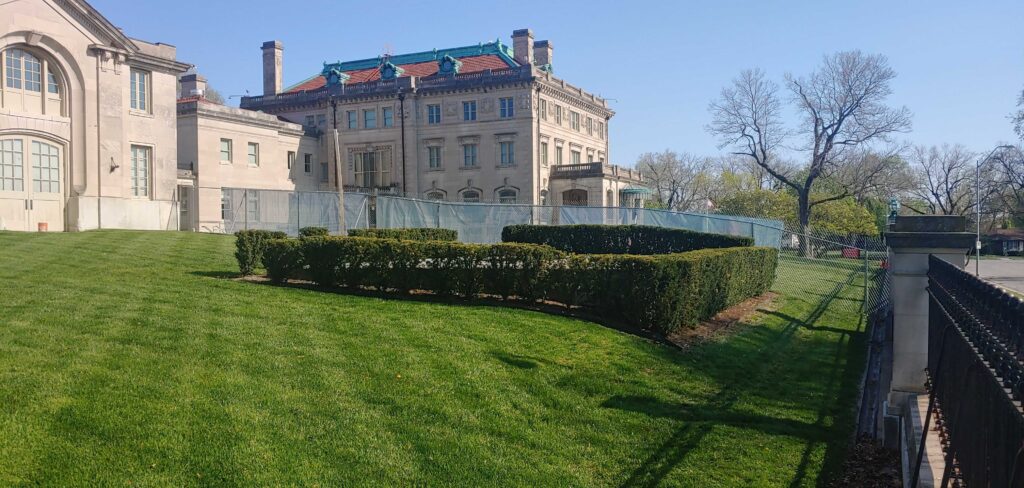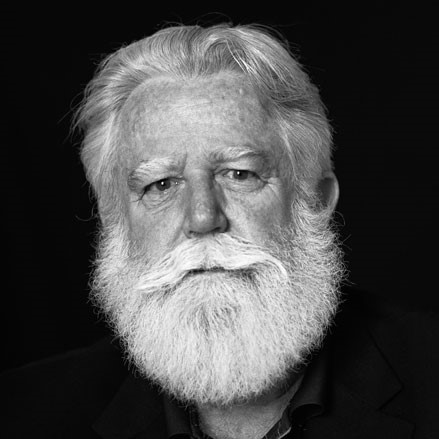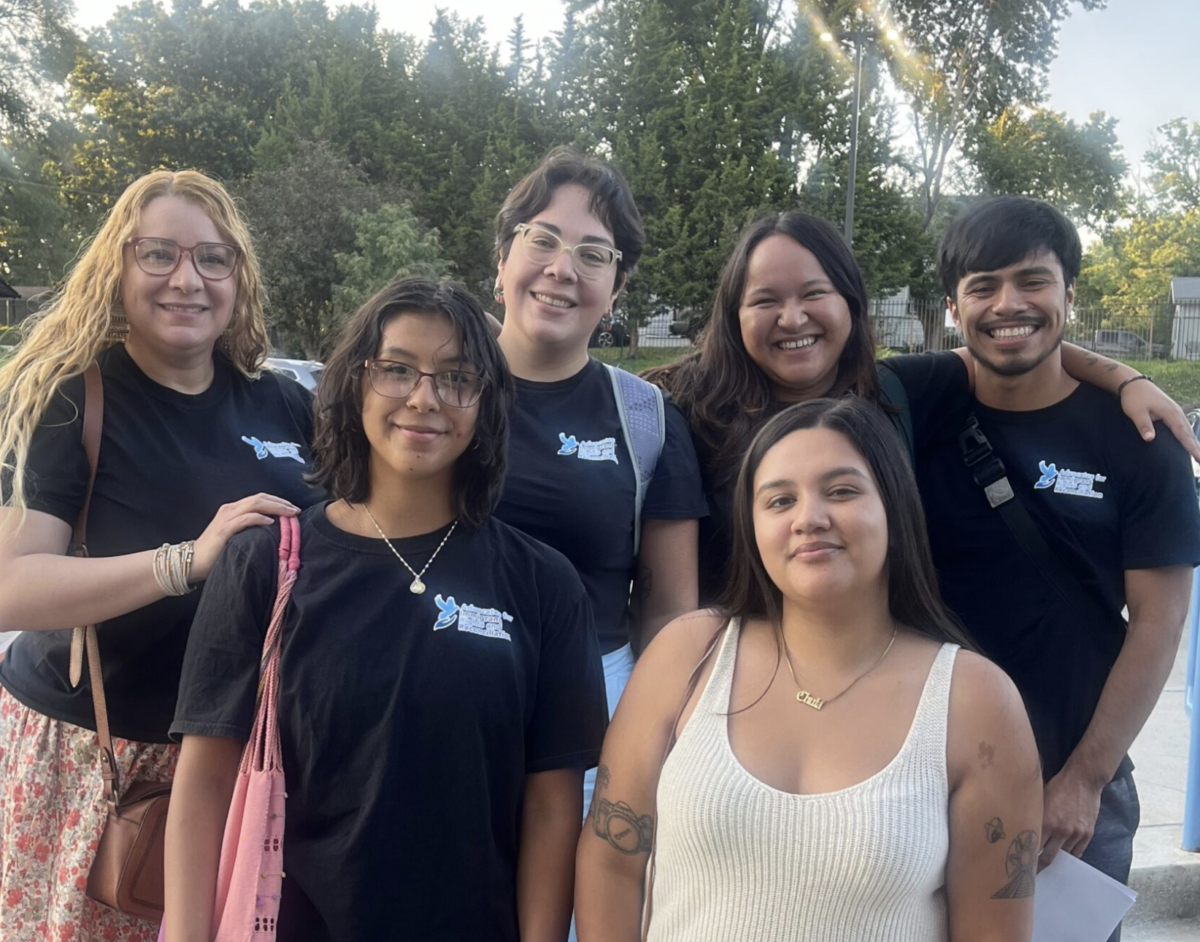
The restoration and renovation of Corinthian Hall, which opened to the public in October 2021, was Stage I of a multi-staged, multi-year project to rehabilitate the entire 3.5-acre historic property. Now the museum is working with International Architects Atelier on architectural design for the Carriage House, Conservatory, and the James Turrell Skyspace.
The Kansas City Museum announced in April 2022 that it is working with artist James Turrell and International Architects Atelier to create a Turrell Skyspace at the Kansas City Museum. The museum is in the early stages of design, with the Turrell Skyspace slated to open in 2024.
James Turrell (b. 1943, Los Angeles, California), one of the most prolific artists of our time, has been recognized across the globe for his artistic and architectural contributions. Turrell has installed works in seventeen states in the USA and twenty-two countries. For more than 50 years, Turrell has worked directly with light and space to create artworks that engage viewers with the limits and wonder of human perception and reality. Turrell, an avid pilot who has logged over twelve thousand hours flying, considers the sky as his studio, material, and canvas.

A Turrell Skyspace is a specifically proportioned chamber with an aperture in the ceiling open to the sky. Skyspaces are site-specific and can be autonomous structures or integrated into existing architecture. The aperture can be round, elliptical, or square. Viewers sit inside the chamber to observe the sky. A sequenced light program inside the Skyspace, designed by Turrell, interacts with the atmospheric light coming through the aperture in the ceiling to create a spectrum of colors and an immersive sensory experience particularly robust at dawn and dusk. There are more than 85 Skyspaces in the world, with 38 of them in the United States, and the Kansas City.
The Kansas City Museum Skyspace will be its own independent 700 square-foot structure on the west side of the Kansas City Museum property. To create the Skyspace, the museum will repurpose the existing underground cooling tower structure—a concrete box that contains HVAC equipment which is being relocated. Visitors will enter the Skyspace through a walkway that descends into the chamber. Visitors will sit approximately 11 feet underground in the Skyspace chamber and view the sky through a square oculus with a retractable roof in the ceiling of a limestone structure approximately 14-feet above ground.
The Skyspace is being acoustically designed for programs and music performances to celebrate Kansas City’s music history and heritage. In 2017, Kansas City became a member of the UNESCO Creative Cities Network. Kansas City is the only UNESCO Creative City of Music in the United States.
Conversations with James Turrell about creating a Skyspace for the Kansas City Museum began in 2014. The Kansas City Museum’s Skyspace is yet another creative project that advances the mission, vision, and overall master plan for the Kansas City Museum property while honoring the museum’s history.
Kansas City Museum Foundation Chair Allen Dillingham remarks, “The Skyspace is a meaningful, innovative way to honor the history of the museum’s former beloved planetarium and create a new, significant artwork and destination for our City and State. We are honored, proud, and grateful to work with James Turrell.”
Kansas City Museum Foundation Vice Chair Sonié Joi-Thompson Ruffin notes, “The Kansas City Museum sits atop the Missouri River Valley adjacent to parkland. As the Home of the Whole Story of our City’s history, the museum serves as a beacon on the bluff, illuminating the often untold stories, shining a light on the unacknowledged or deeply buried histories, and inspiring an enlightened understanding and acceptance for our shared experiences.”
The Kansas City Museum’s Skyspace will be a creative, restorative space for observation, perspective, reflection, and connection. Kansas City Museum Executive Director Anna Marie Tutera explains, “Turrell Skyspaces reaffirm that we all share the same sky. As time passes, we are witness to the infinite history and future that surrounds us—the outer vastness. The framed sky will be an invitation to slow down, let your eyes relax, and allow the present and your presence to come into focus. I imagine the Kansas City Museum Skyspace as a light that connects us and reveals the lineage of lives and legacies that envelop and inspire us.”
To learn more about James Turrell and see some of his Skyspaces, visit the James Turrell website. As the design stages progress, more information and renderings will be updated on the museum’s website.
James Turrell
Informed by his training in perceptual psychology and a childhood fascination with light, James Turrell (b. 1943, Los Angeles, California) began experimenting with light as a medium in southern California in the mid-1960’s. The Pasadena Art Museum mounted a one-man show of his Projection Pieces, created with high-intensity projectors and precisely modified spaces, in 1967. Mendota Stoppages, a series of light works created and exhibited in his Santa Monica studio, paired Projection Pieces with structural cuts in the building, creating apertures open to the light outside. These investigations aligning and mixing interior and exterior, formed the groundwork for the open sky spaces found in his later Skyspace, Tunnel and Crater artworks.
Turrell often cites the Parable of Plato’s Cave to introduce the notion that we are living in a reality of our own creation, subject to our human sensory limitations as well as contextual and cultural norms. This is evident in Turrell’s over eighty Skyspaces, chambers with an aperture in the ceiling open to the sky. The simple act of witnessing the sky from within a Turrell Skyspace, notably at dawn and dusk, reveals how we internally create the colors we see and thus, our perceived reality.
In 1977 Turrell began a monumental project at Roden Crater, an extinct volcano in northern Arizona. Continuing the practice begun in his Ocean Park studio, Turrell has sculpted the dimensions of the crater bowl and cut a series of chambers, tunnels and apertures within the volcano that heighten our sense of the heavens and earth. While Roden Crater is not yet open to the public, Turrell has installed works in twenty-two countries and in seventeen US states that are open to the public or can be viewed by appointment. Agua de Luz, a series of Skyspaces and pools constructed within a pyramid in the Yucatán, and forthcoming projects around the world, from Ras al-Khaimah to Tasmania, integrate many of the principles and features embedded within Roden Crater.
The Kansas City Museum is actively fundraising for the design and construction of Turell Skyspace. To contribute to the Skyspace project, contact Anna Marie Tutera at atutera@kansascitymuseum.org.


















